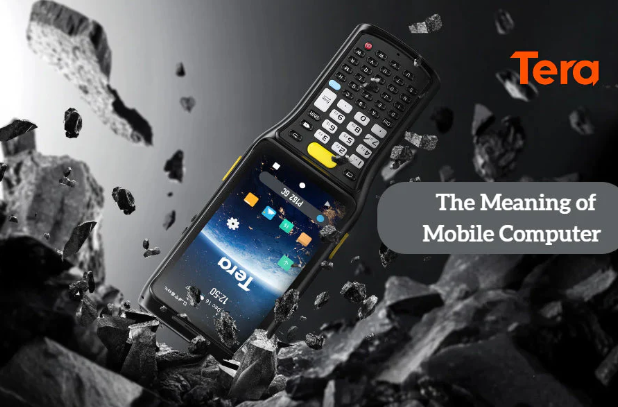Mobile computer scanners have become essential tools in modern industrial settings, transforming how businesses manage inventory, track assets, and streamline operations. This technology did not appear overnight but is the result of decades of gradual innovation. The journey began with simple barcode reading systems and evolved into the sophisticated, multi-functional devices used today in warehouses, manufacturing plants, and logistics networks.
The Dawn of Barcode Scanning Technology
The concept of using barcodes for inventory management first emerged in the grocery sector. While the idea was conceived in the late 1940s, it took until 1974 for the first item marked with a Universal Product Code (UPC) to be scanned in a commercial store. This event marked the practical beginning of automated data capture, paving the way for more advanced systems.
Early barcode readers were rudimentary. One of the first was adapted from a movie sound system, using a photosensitive tube to convert light variations from a barcode into data. Another early system, developed for railways in the 1960s, used colored strips on railcars to encode numbers. Though not commercially successful, this concept contributed to the development of later laser-based systems.
The Rise of Dedicated Scanning Devices
The Era of Laser Scanners
For many years, laser scanners were the dominant technology for reading one-dimensional (1D) barcodes. These devices use a laser beam, swept across the barcode by mirrors or prisms, to read the pattern of thick and thin lines. Available in both handheld and stationary models, laser scanners became a common sight in industrial and retail environments.
Some handheld models were known as ‘RF scanners,’ a term referring to their use of radio frequency signals to transmit data wirelessly. In the 1970s, fixed raster scanners appeared, using lasers and mirrors to create patterns that could read 1D barcodes from various angles. These are still common in grocery store checkouts.
The Shift to Image-Based Reading
The 1990s introduced charge-coupled device (CCD) scanners, which used a row of photocells on a chip to function like a 1D camera. They were more affordable than laser scanners and competed effectively in the market. This technology became even more significant in the 2000s when advancements allowed for two-dimensional (2D) arrays, enabling the reading of 2D codes.
2D codes can store a much larger amount of information in a smaller space, a critical feature for industries like logistics, healthcare, and manufacturing. This led to the rise of image-based barcode readers, which capture a complete digital image of the barcode. These devices use high-resolution cameras and embedded processors to run decoding algorithms, allowing them to read both 1D and 2D codes, including those directly marked on parts.
A key benefit of image-based technology is the ability to store images of scanned barcodes. If a ‘no-read’ occurs, the image can be analyzed later to identify and correct the root cause, such as a clogged print head or poor lighting. This feedback loop is a significant advantage for process improvement.
Merging Mobility with Computing Power
From Portable Computers to Enterprise Tools
The evolution of scanning technology ran parallel to the development of mobile computing. The first portable computers emerged in the 1980s, though they were bulky and heavy by modern standards. By the 1990s, laptops and Personal Digital Assistants (PDAs) made it easier to work and organize data on the move.
The retail industry was one of the first to adopt mobile computers to automate inventory and ordering processes, eliminating paper forms and reducing input errors. As the devices gained functionality, their use expanded to manufacturing, distribution, and transportation.
The Smartphone’s Influence and Industrial Adaptation
The arrival of the consumer smartphone in the 2000s revolutionized mobile technology with intuitive touchscreens and powerful app ecosystems. However, these consumer devices were ill-suited for demanding industrial environments. They lacked the necessary ruggedness, dedicated barcode scanning engines, and battery life for extended shifts.
In response, manufacturers developed enterprise-grade mobile computers. These devices combined the user-friendly interfaces of smartphones with the essential features required for business use. They were built to be durable, featured powerful integrated scanners, and included swappable batteries to ensure continuous operation.
Modern Mobile Computers in Industrial Settings
A Unified Device for Diverse Tasks
Today’s mobile computers are all-in-one tools designed for efficiency and accuracy. They integrate advanced data capture with powerful processing and wireless connectivity, all within a single device. Their functionality extends beyond scanning to include internal communications, task management, and running business-specific software for warehouse management or enterprise resource planning.
These devices come in various forms to suit different workflows.
- Handheld Mobile Computers are lightweight and designed for fast-paced environments.
- Wearable Scanners, such as ring scanners, allow workers to keep both hands free for tasks like moving boxes.
- Vehicle-Mounted Computers are installed in forklifts and trucks to provide operators with real-time access to inventory data and route information.
Technologies Shaping the Future
The evolution of these devices continues. Emerging technologies like Radio Frequency Identification (RFID) and Near Field Communication (NFC) are providing new ways to track assets and streamline operations without direct line-of-sight scanning. Furthermore, advancements in hardware, such as high dynamic range (HDR) for improved image capture and more powerful processors, are making these devices even more capable. This convergence of technologies defines what is mobile computer is today—a powerful, rugged, and connected tool for the modern workforce.
From the first simple scanners to the multifaceted devices of today, mobile computer scanners have steadily evolved to meet the demands of industrial settings. They are no longer just tools for data capture but have become central to improving productivity, ensuring accuracy, and providing real-time visibility across the entire supply chain. As technology advances, these devices will continue to play an increasingly vital role in industrial operations.


